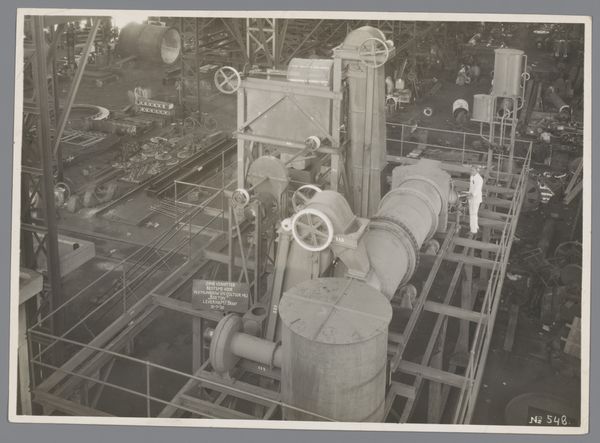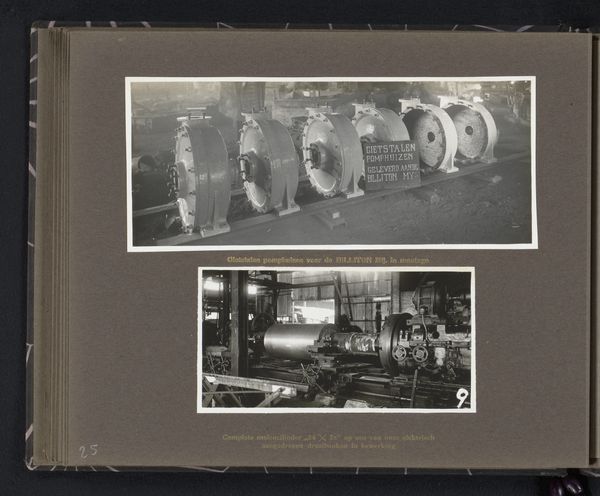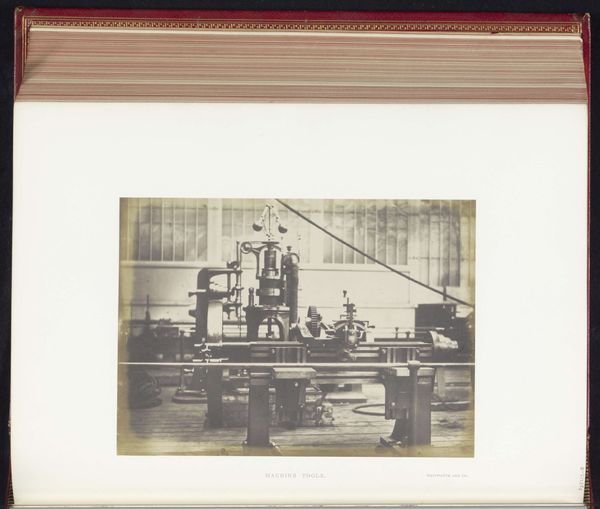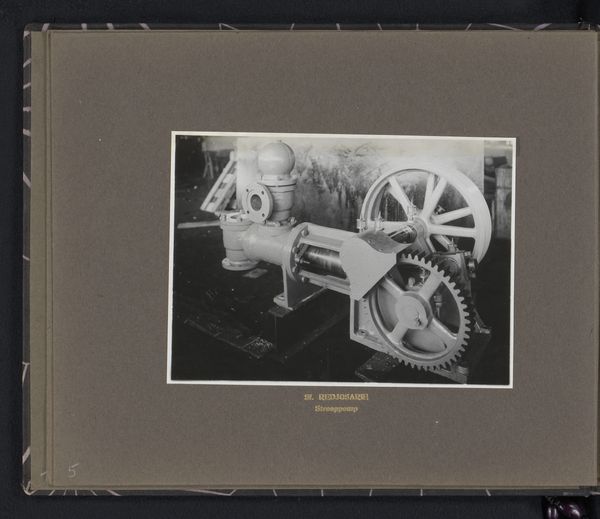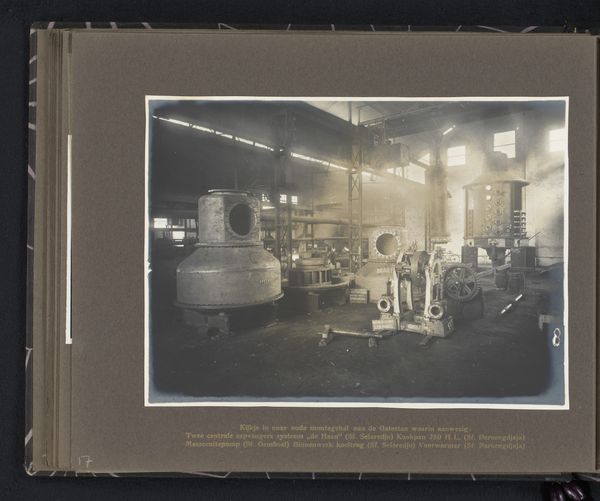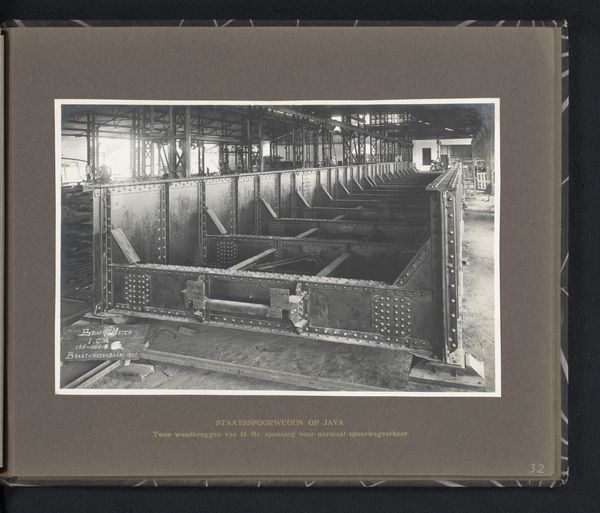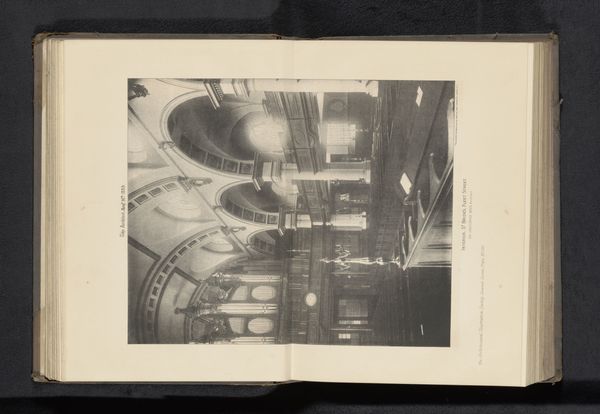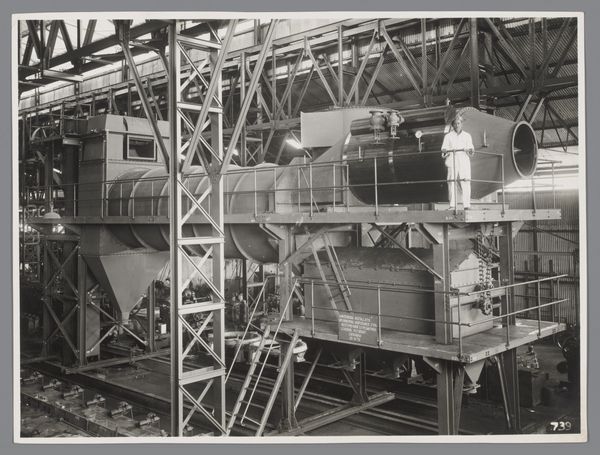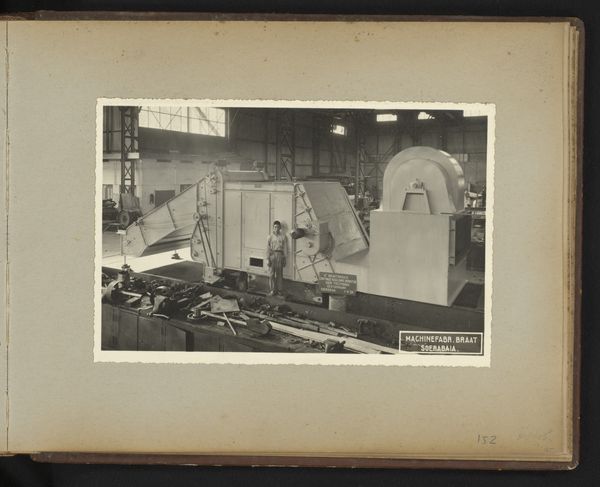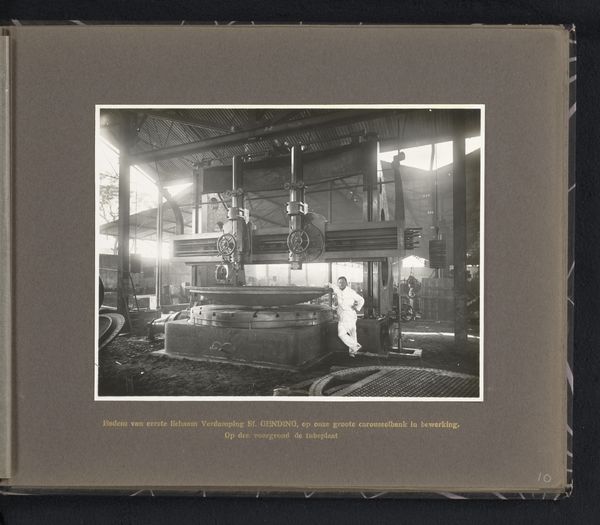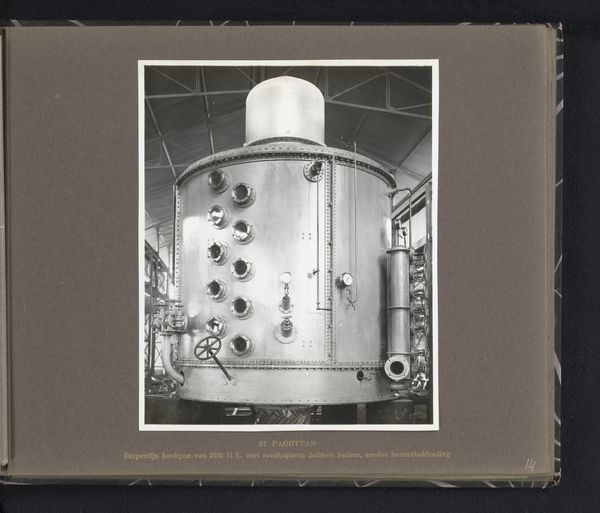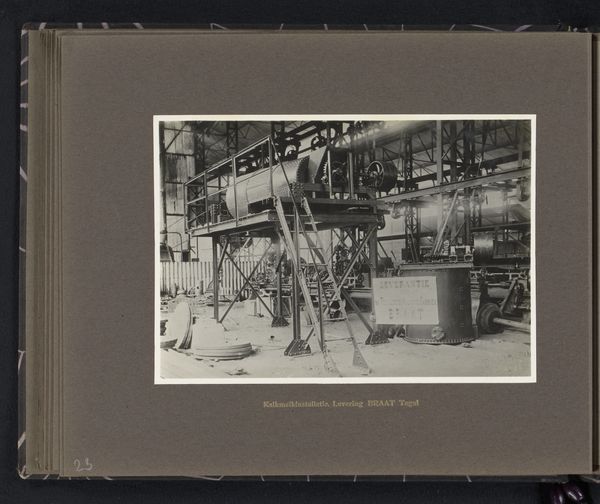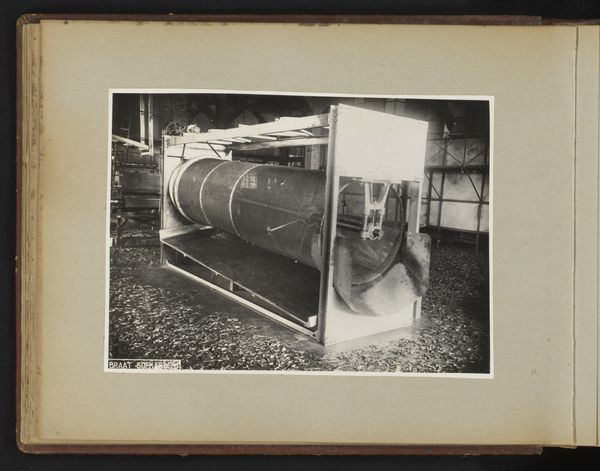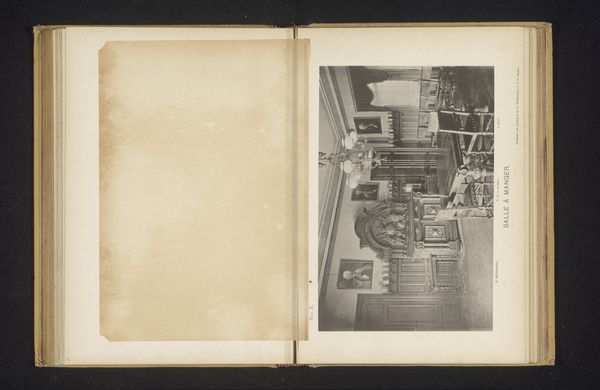
photography
#
historical design
#
photography
#
history-painting
Dimensions: height 157 mm, width 207 mm, height 240 mm, width 290 mm
Copyright: Rijks Museum: Open Domain
Editor: So, here we have an anonymous photograph from between 1916 and 1924, titled "Groote centrale sapvanger systeem 'de Haan' in bewerking." It depicts what looks like a large industrial machine. I’m struck by the scale of it and how these huge mechanical forms seem almost surreal. What do you see in this piece? Curator: I see a fascinating visual record of early industrial development, but also an important reflection on the changing role of labour. Notice the lack of human presence; the focus is entirely on the machine itself. Consider the social context: during this period, industrialisation was rapidly transforming societies. This image captures both the awe and the alienation that came with it. Editor: Alienation? How so? Curator: The "sapvanger," or sap-collecting system, likely mechanised a previously manual process. While increasing efficiency, it displaced workers, creating anxieties around economic security and redefining the very nature of work. Whose labor did this machine replace, and what narratives are missing by the choice of this one mechanical system over others? What were the working conditions like for those who built or maintained it? Editor: That makes me think about the labor involved in *making* this image. Curator: Exactly. And who was its intended audience? Was it documenting progress or celebrating technological advancement? How does that perspective impact our own viewing experience today, given our concerns around labor practices and sustainability? Editor: I hadn’t thought about it that way. Seeing it through the lens of labor really shifts the focus. Curator: Right, thinking critically allows us to recognize that photographs can serve as a powerful political document in understanding technological changes and historical gaps.
Comments
No comments
Be the first to comment and join the conversation on the ultimate creative platform.
